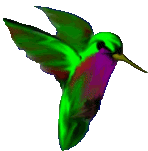Week 6
Assignment #1
Combine an html slider with an array.
I realize there are way more complicated ways to do this. This past week I got a bit way-sided by other classes, but definitely want to catch up—and have ideas for how I could use various applications in ICM for web or projects. For this one I decided I wanted to add an image, which is something I hadn't done yet. I combined it with one of Shiffman's tutorials on adding words with an array. The words are cheesy. But at least the application worked! Maybe this could be some office lobby art.
If you click on it the word changes. If you move the slider the transparency layer color changes:
I tried adding other images but couldn't get them to coexist on the same canvas. Working towards it.
Next I tried uploading my own image (I realize this is not technically part of the assignment, but eventually this is going towards adding images in an array, or at least animating one if I can combine it all before class). I added in the same place where you add .js files associated with the sketch.
Click to add more "~" wavy line symbols... Move the slider to change the color transparency:
Below I was able to get a few images uploaded from the internet into my sketch in an array, but I didn't get to the stage of animating them. I wanted to make something change automatically or with a slider, like rotating the images or adding and subtracting the images with mouse clicks. But I will have to figure that out this upcoming week (or some other interesting interaction or animation with objects...for the next homework assignment...):




























